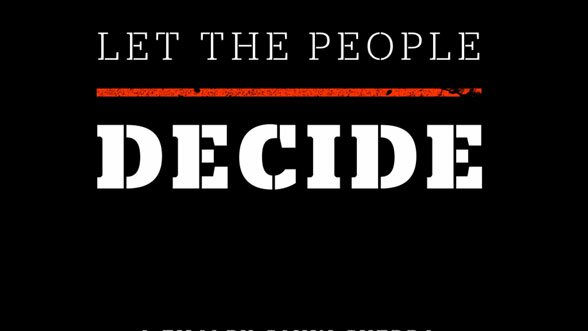
Gavin Guerra thought he knew about the civil rights movement from all his years of schooling and following politics and government.
Then the Weston resident set out to make a documentary film on the history of voting rights from the civil rights era to today, and found out there was a lot he didn’t know.
Guerra, 49, does visual effects work for movies, television, commercials and video games. His film credits include X-Men 2 and Frost/Nixon.

He said politically aware people viewing his film, Let the People Decide, often tell him they are learning things. “I’m connecting dots people haven’t seen,” he said.
The film traces the history of voting rights struggles in the United States from 1960 through the present day.
Guerra interviewed about 50 people for his documentary, although not all will make the final cut. The current rendition is about one-hour-and-45-minutes long, with more fine-tuning expected.
Guerra was able to interview many well-known civil rights figures, such as U.S. Rep. John Lewis, NAACP Chairman Julian Bond, singer Harry Belafonte and comedian Dick Gregory.
“These are voices of people who are invaluable,” Guerra said. “I feel I was engaging in history at a high level.”
Bob Moses
He also interviewed civil rights heroes who aren’t household names, such as Bob Moses, who in the early 1960s began organizing African-American voter registration drives in Mississippi.
Moses organized the Freedom Summer in 1964, when many out-of-state college students helped sign up black voters.
Guerra got the idea to focus on voting and race in 2013, before Donald Trump ran for president, and his vision continued evolving based on political events and court decisions. “It never really ends,” he said. “The battle is always being fought.”
One inspiration was attending a reunion discussion by cast members from the 1977 TV mini-series Roots. African-American actors talked about the difficulty of pursuing careers in the 1950s and ’60s, and asked what people were doing to advance civil rights causes now.
That’s when Guerra turned to a friend and told him, “I’m going to make a film about Bob Moses.” He had recently learned about Moses in a civil rights book.
He described Moses as being a grassroots organizer who is courageous and professorial. Moses was beaten and jailed by angry white Southerners. “How do I get into my 40s and not know who this person is?” Guerra asked.
Once he made contact with Moses, he said, other people began making themselves available for the film. “Bob is held in such high regard in the movement,” he said.

Guerra wrote, produced and directed the documentary, which has only been shown publicly a few times. It currently has three parts: the Mississippi early voting rights efforts, using race for political advantage in elections, and recent voting rights actions in North Carolina, where Guerra was present for many protests and court decision reactions.
Guerra is worried about how divided the country is today. “There’s no compromise,” he said. “It’s a complete cage match. We’re lost. Both sides play the victim so it’s hard to find solutions.”
Historically, he said, both political parties share in the blame. The Democrats promoted segregation in the Old South, then the Republicans adopted a Southern strategy to covertly use race to their advantage.
He said that’s changed with Trump, who is more overt in his words and actions. “Trump has sort have done away with the dog whistles,” he said, explaining “a populist demagogue can step in and rile people up” at times of discontent.
Guerra tried to be non-political in his approach to the film’s first two sections, presenting a diversity of opinions. Finding conservatives willing to be interviewed was difficult at times, he said.
He’s discouraged by low voter turnout. “Your vote does count,” Guerra said. “People are fighting and going to jail to get that right to vote.”
Background
He grew up in suburban New York and graduated from Parsons School of Design in 1990, majoring in illustration. He became interested in computer graphics as it was growing in importance. “I jumped on that train really early,” he said.
Guerra founded VRAM, a New York City-based company specializing in visual effects. He’s taught computer graphics at the college level in the city, and soon begins doing so at Fairfield University.
He moved to Weston a year ago with his wife and their child.
Guerra financed Let the People Decide through personal funds, his company, and the Kickstarter crowdfunding website. An agent is shopping the film around, and perhaps a national cable TV network will buy it. Guerra could also promote it through film festivals or a college tour.
He’s eager to finalize a version and have it seen by a wider audience. “I’ve been working on it for five years,” Guerra said. “I want to get it out there.”
